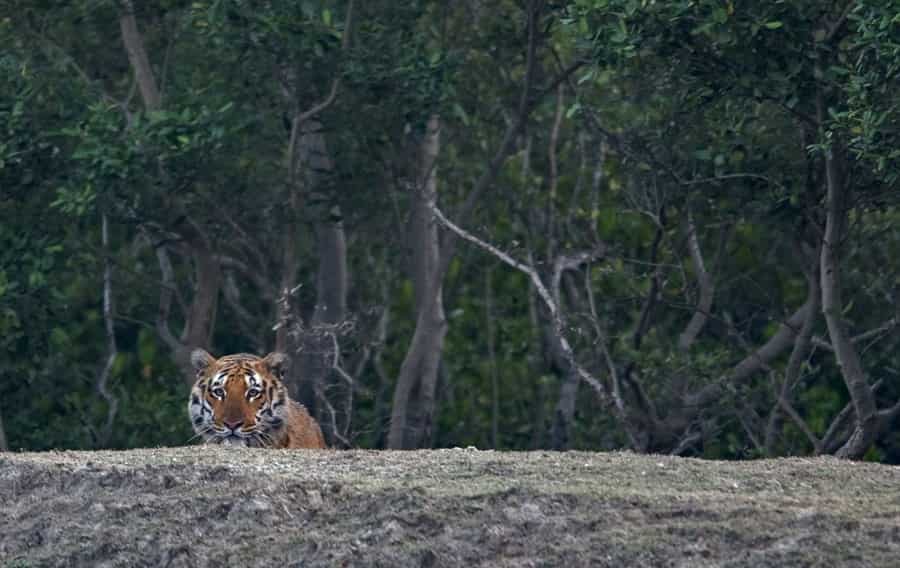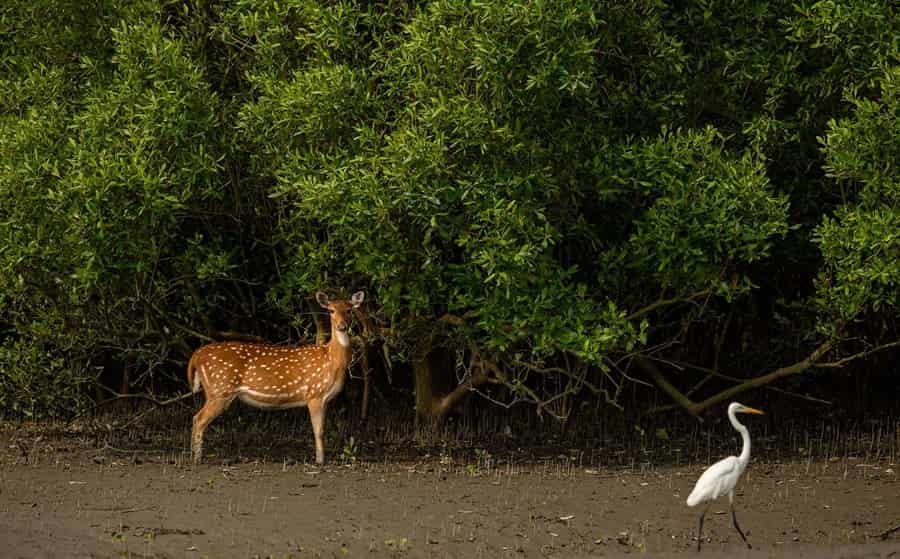Last Updated on 06/01/2025
Although it is the tiger that attracts most visitors to the Sundarbans National Park, its biological diversity is one of the main reasons why UNESCO designated it a World Heritage Site in 1987.
The Sundarbans, named after the once-abundant sundari trees, spans a vast deltaic region — an archipelago of mangrove-covered islands and a network of tidal rivers and creeks. India shares the Sundarbans with Bangladesh, and together they form the largest mangrove forest in the world. Of the 4,264 square kilometers of mangrove forest in India (entirely located in West Bengal), 2,585 square kilometers have been designated as a tiger reserve under Project Tiger. In addition, the Sundarbans is a National Park (established in 1984) and a Biosphere Reserve (designated in 1989).
Entry Points and Travel to the Sundarbans
Today, there are several entry points into the Sundarbans, located within a 45 km to 100 km radius south and southeast of Kolkata. Whether you enter through Canning (the nearest suburban railway station) or any other town, you must eventually travel by boat. While there is limited accommodation on land (a state tourism lodge and a few privately operated resort-style units), visitors can also opt for boat cruises run by the State Tourism Department and private operators.
Unique Features of the Sundarbans Forest
The Sundarbans is very different from any other forest in India. Apart from the inhabited islands, tourists are allowed to disembark only at specific islands, with permission, and are always accompanied by armed forest guards when visiting the watch towers. From these towers, visitors can get a closer look at the dense forest canopy. It is not difficult to spot spotted deer, wild boar, or monkeys near waterholes, but spotting a tiger is a rare event. Sajnekhali Island has a watch tower and a Mangrove Interpretation Center where visitors can learn about the region’s unique biodiversity.
Cruising Through the Sundarbans
A typical trip to the Sundarbans involves an exciting cruise along tidal rivers such as the Matla or numerous creeks. Cormorants, curlews, fishing eagles, and kingfishers keep you company as you travel. The log on the mudflat that you may have ignored could very well be a crocodile! Tides are a common feature here, and the animals have learned to adjust accordingly.
Spotting the Tiger in the Sundarbans

Although one must be extremely lucky to see a tiger (as it can blend into the russet brown vegetation), people have been fortunate enough to spot tigers along the mud banks (craftily navigating the spiky roots) or swimming across the channels. The proximity of humans and wild animals makes life difficult for both, as they compete for living space and food. It is important to note that tigers here are not habitual man-eaters. The close proximity has familiarized tigers with humans. However, with increasing numbers of honey and wood gatherers, as well as poaching threats, the tiger is already fighting a losing battle.
Visitor Advice from an Expert
“Visitors to the Sundarbans should not focus solely on seeing a tiger,” says Tilottama Das, a former State Tourism official and veteran guide of the region. “Instead, they should enjoy the unique environment and relaxing cruise. If they happen to see a tiger, they should consider it a bonus.” As they say in the Sundarbans, “the tiger is always watching you, even if you may not see it.”
Best Time to Visit and Travel Tips
The best time to visit the Sundarbans is between November and March. Most package tour operators handle the necessary entry permits and forest guard arrangements.
The modest government tourist lodge (on Sajnekhali Island) and a few private accommodations are heavily booked during the peak tourist season, so advance planning is advisable.
Don’t forget to carry essentials such as a flashlight and batteries, sunglasses, an umbrella, insect/mosquito repellents, and any personal medications.



 Call
Call WhatsApp
WhatsApp Enquiry
Enquiry